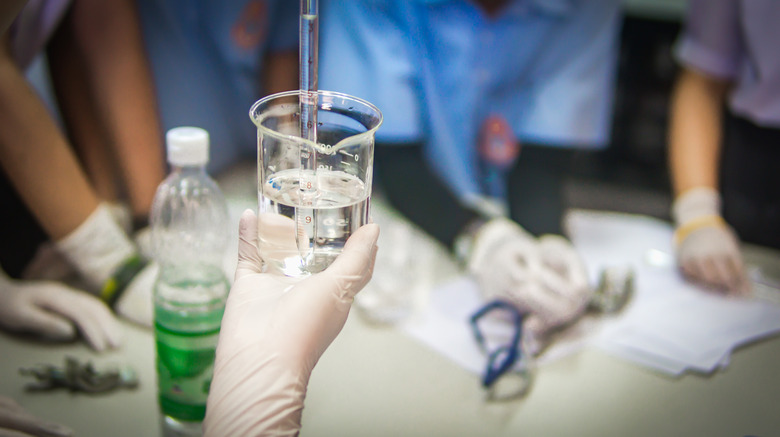How To Raise The PH Level In Water
Pure water has a pH level of 7, which means it is neutral on the pH scale. If you want to increase the pH of water, you must add an alkaline substance to it. The pH scale ranges from 0 to 14, with anything above 7 being alkaline, and anything below 7 being acidic.
Sometimes, water softeners are recommended for people who want to increase the pH level of their drinking water. Water softeners exchange ions, while alkaline-rich compounds, such as soda ash, neutralize low-pH minerals.
One thing you may have in your pantry to raise the pH level of water is baking soda (sodium bicarbonate), which is an alkaline substance with a pH of about 9. You can't measure the pH of baking soda because it is a dry powder. Obtaining a pH level requires an aqueous solution because pH is the result of the comparative amount of free hydrogen and hydroxyl ions in a water-based solution. Adding baking soda with its pH of 9 to water with a neutral pH of 7 raises the pH level of water.
1. Pour Water Into Measuring Cup
Pour water into a 1-cup measuring cup. You may want to test the pH of the water with a pH meter or test strip to confirm that it has a pH of 7 or close to it. Do not use litmus papers for this experiment, as they only tell you whether a substance is acidic, alkaline or neutral, and don't provide the exact pH level.
2. Add Baking Soda to Water
Add a teaspoon of baking soda to the water and mix well with a whisk or spoon until the baking soda dissolves completely.
3. Test pH With pH Strips
3\. Test the pH level again to check that it has increased. If you want to raise the pH level further, add more baking soda. Continue doing so, testing each time, until you achieve the desired pH level.
TL;DR (Too Long; Didn't Read)
To raise the pH level of the water in a fish tank, 1 teaspoon of baking soda per 5 gallons of water is a safe amount for small incremental increases. Dissolve the baking soda in water, add this mixture to the tank (after you remove the fish) and stir well.
Lye, milk of magnesia and ammonia are other examples of alkaline substances that raise the pH level in water.
Read the directions included with your pH meter or test strip to ensure you use it correctly. The amount of time you need to hold the testing device or strip in the solution depends on the brand.
Things Needed
- Pure or distilled water
- Measuring cup
- Teaspoon
- Baking soda
- Small whisk
- pH meter or pH test strips
Cite This Article
MLA
Gillespie, Claire. "How To Raise The PH Level In Water" sciencing.com, https://www.sciencing.com/raise-ph-level-water-6504653/. 26 April 2018.
APA
Gillespie, Claire. (2018, April 26). How To Raise The PH Level In Water. sciencing.com. Retrieved from https://www.sciencing.com/raise-ph-level-water-6504653/
Chicago
Gillespie, Claire. How To Raise The PH Level In Water last modified March 24, 2022. https://www.sciencing.com/raise-ph-level-water-6504653/
